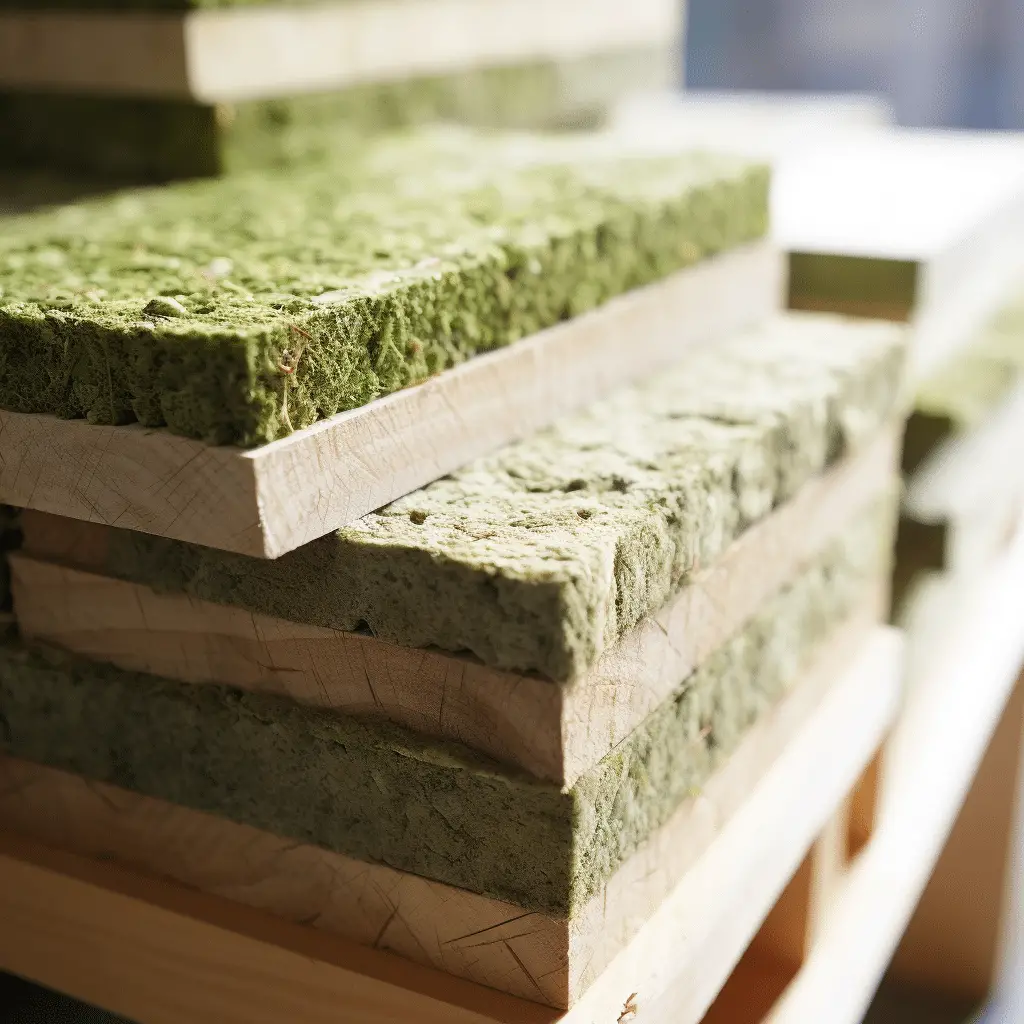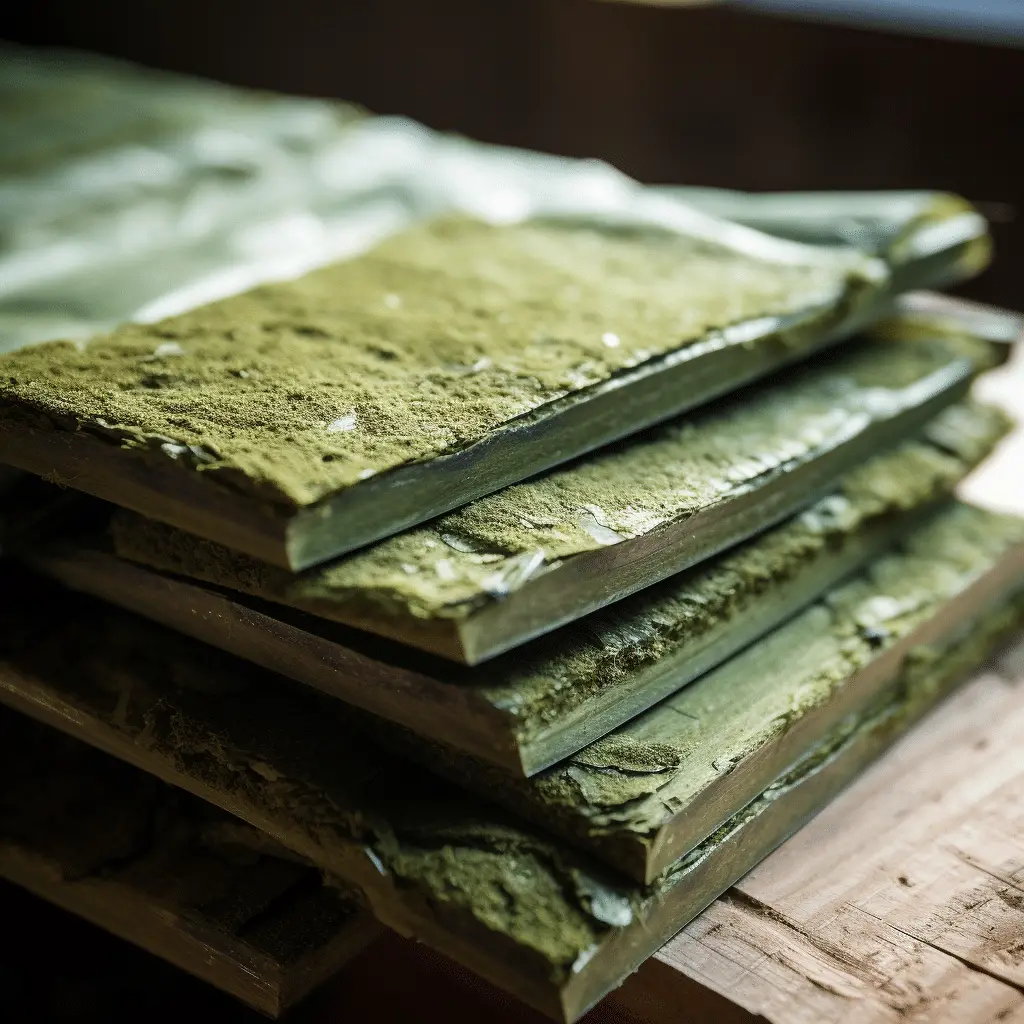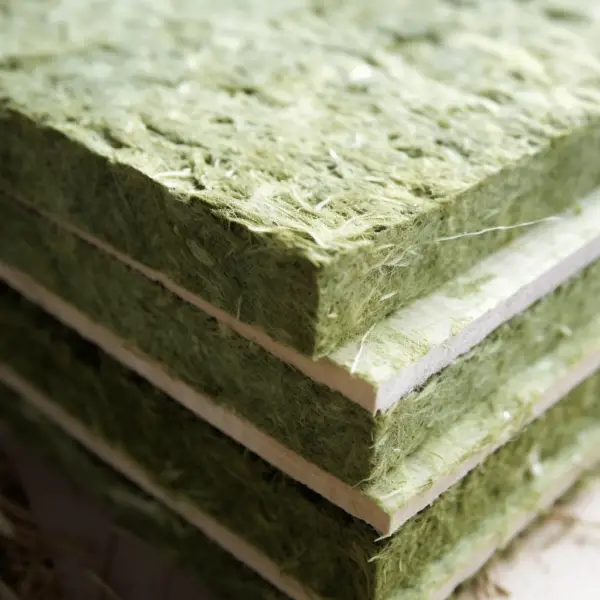Eco-Friendly Insulation: Building Sustainability For A Greener Future
Insulation is an essential aspect of any construction project, not only for energy efficiency but also for reducing environmental impact. Many conventional insulation options are made from non-renewable resources and have a negative impact on the environment.
There are several green alternatives available that fulfill construction needs in the U.S. These materials prioritize renewable sourcing, biodegradability, and low environmental impact, making them ideal choices for environmentally conscious builders and homeowners.
Key Takeaways:
- Sustainable insulation materials are crucial for energy efficiency and reducing environmental impact.
- Conventional insulation materials may not be eco-friendly and can harm the environment.
- Sustainable insulation options such as cork, wool, wood wool, and hemp provide green alternatives.
- These materials offer benefits such as renewable sourcing, biodegradability, and low environmental impact.
- Selecting eco-friendly insulation helps contribute to sustainable building practices and reduce carbon footprint.
The Importance of Sustainable Insulation

It plays a crucial role in reducing energy consumption and minimizing the carbon footprint of buildings. While traditional insulation materials may help retain heat and lower energy use when installed correctly, their production and disposal methods often have a negative impact on the environment.
“By selecting sustainable insulation, homeowners and builders can contribute to the overall sustainability of buildings, improve thermal comfort, and reduce their carbon footprint.”
By selecting sustainable insulation, homeowners and builders can contribute to the overall sustainability of buildings, improve thermal comfort, and reduce their carbon footprint. Sustainable insulation materials are designed to have a minimal environmental impact throughout their lifecycle, including their production, installation, and disposal.
Furthermore, sustainable insulation materials offer excellent thermal performance, ensuring energy efficiency and reducing the need for excessive heating or cooling. This not only lowers utility bills but also minimizes greenhouse gas emissions associated with energy consumption. Additionally, sustainable insulation materials can help improve indoor air quality by minimizing the release of volatile organic compounds (VOCs) and other harmful substances. By embracing eco-friendly insulation options, we can create healthier, more energy-efficient buildings and contribute to a more.
Four Sustainable Insulation Materials
When it comes to selecting sustainable insulation materials, there are several options available that offer both environmental benefits and effective thermal performance. Four notable sustainable insulation materials include cork insulation, wool insulation, wood wool insulation, and hemp insulation.
Cork Insulation
Cork insulation is sourced from the bark of cork oak trees, making it a highly sustainable option. The trees are not cut down during the harvesting process; instead, the cork-rich bark is stripped, allowing the trees to regrow their bark and continue absorbing carbon dioxide. Cork insulation can be found in the form of slabs or granules and is biodegradable, making its disposal environmentally friendly.
Wool Insulation
Wool insulation is made from natural sheep’s wool fibers. It offers excellent thermal insulation properties and is known for its moisture-wicking abilities. Wool insulation is also resistant to fire and pests, making it a safe and durable choice. Additionally, wool is a renewable resource that can be easily recycled or composted at the end of its lifecycle.
Wood Wool Insulation
Wood wool insulation is made from wood fibers that are processed into fine strands. It is a sustainable option as it is made from renewable wood sources, typically recycled timber. Wood wool insulation provides good acoustic insulation and moisture regulation properties, making it suitable for both thermal and sound insulation applications.
Hemp Insulation
Hemp insulation is made from the fibers of the hemp plant. It is a highly sustainable option due to the plant’s fast growth, low water requirement, and minimal pesticide usage. Hemp insulation offers excellent thermal insulation and moisture-wicking properties. It also has natural fire-resistant properties, making it a safe choice for building applications.
Cork insulation, wool insulation, wood wool insulation, and hemp insulation are four sustainable options worth considering for insulation needs. Each material offers unique benefits such as renewable sourcing, biodegradability, and low environmental impact.
| Insulation Material | Key Benefits |
|---|---|
| Cork Insulation | – Sourced from renewable cork oak trees – Biodegradable and eco-friendly disposal |
| Wool Insulation | – Made from natural sheep’s wool – Excellent thermal insulation and moisture-wicking abilities |
| Wood Wool Insulation | – Made from recycled timber – Provides good acoustic insulation and moisture regulation |
| Hemp Insulation | – Made from fast-growing hemp plants – Natural fire resistance and moisture-wicking properties |
Factors to Consider When Choosing Sustainable Insulation
When selecting sustainable insulation, it is essential to take into account several factors that can influence its suitability for your specific needs. These factors include the application of insulation, the available space, and your budget. By carefully considering these aspects, you can make an informed decision that optimizes both the performance and sustainability of your insulation choice.
Insulation Application
Different forms of insulation are suitable for various applications, such as loft insulation, cavity walls, and internal or external walls. Understanding the specific requirements of your project will help you choose the right type of insulation that provides optimal thermal performance and energy efficiency.
Available Space
The available space in your building or construction project is another important factor to consider when selecting sustainable insulation. Some insulation materials may require more space for installation, which can impact the overall design and functionality of your space. Consider the thickness and density of the insulation and ensure that it can be accommodated within the available space without compromising other essential aspects of your project.
Budget
While sustainable materials may have a slightly higher upfront cost compared to conventional options, they often provide long-term cost-effectiveness due to energy savings and other environmental benefits. Evaluate the lifecycle costs of different insulation materials and consider any potential financial incentives available to offset the initial investment.
| Factor | Considerations |
|---|---|
| Insulation Application | Consider the specific requirements of your project, such as loft insulation, cavity walls, or internal/external walls. |
| Available Space | Assess the available space and ensure that the chosen insulation can fit without compromising functionality. |
| Budget | Evaluate the lifecycle costs and potential financial incentives available for sustainable insulation materials. |
Available space, and budget, you can make an informed decision when selecting. This careful consideration will not only ensure the optimal performance of your insulation but also contribute to the overall sustainability and energy efficiency of your building or construction project.
The Benefits of Sustainable Cork-based Insulation
It offers numerous advantages as a green and energy-efficient solution for homes and buildings. Made from the bark of cork oak trees, which can be harvested without cutting down the trees themselves, cork insulation provides excellent thermal insulation properties. This reduces the need for excessive heating, leading to lower energy consumption and reduced heating bills. In fact, cork insulation can potentially reduce heating bills by up to 15%, making it a cost-effective choice in the long run.
Not only is cork insulation highly effective in keeping buildings well-insulated, but it also has a positive environmental impact. Cork oak trees absorb significant amounts of carbon dioxide, helping to combat climate change.
Cork insulation provides excellent thermal insulation, reducing the need for excessive heating and lowering energy consumption.
Furthermore, cork insulation boasts excellent sound insulation properties, making it an ideal choice for reducing noise pollution within homes and buildings. Its natural properties also make it resistant to pests, mold, and mildew, ensuring a healthier indoor environment. With its many benefits, sustainable cork insulation is a smart choice for those seeking energy-efficient.
Highlighted Benefits of Sustainable Cork-based Insulation:
- Excellent thermal insulation properties
- Potentially reduces heating bills by up to 15%
- Positive environmental impact through carbon dioxide absorption
- Biodegradable and renewable
- Effective sound insulation
- Resistant to pests, mold, and mildew
- Versatile application for internal and external insulation needs
Table: Comparison of Sustainable Insulation Materials
| Insulation Material | Thermal Insulation Properties | Renewable | Biodegradable | Sound Insulation | Pest/Mold Resistant |
|---|---|---|---|---|---|
| Cork | Excellent | Yes | Yes | Excellent | Yes |
| Wool | Good | Yes | Yes | Good | Yes |
| Wood Wool | Good | Yes | Yes | Good | Yes |
| Hemp | Good | Yes | Yes | Good | Yes |
As shown in the table, sustainable cork insulation excels in thermal insulation, sound insulation, and resistance to pests and mold, making it a standout choice among sustainable insulation materials. Its renewable and biodegradable properties further contribute to its sustainability and eco-friendliness.
Sustainable Insulation Certifications and Standards
It is essential to look for relevant certifications and standards. These certifications provide assurance that the insulation meets specific environmental and performance criteria, ensuring a high level of sustainability and eco-friendliness.
LEED Certification
One of the most well-known certifications for sustainable building projects is LEED (Leadership in Energy and Environmental Design). LEED certification evaluates the overall sustainability of a building, including its materials, resources, energy efficiency, and indoor environmental quality. To achieve LEED certification.
LEED certification evaluates the overall sustainability of a building, including its materials, resources, energy efficiency, and indoor environmental quality.
GREENGUARD Certification
Another important certification to consider is GREENGUARD. This certification focuses on indoor air quality and ensures that the insulation materials do not emit harmful pollutants or volatile organic compounds (VOCs). Insulation with GREENGUARD certification helps create a healthier indoor environment by minimizing the release of toxic substances.
Cradle to Cradle Certification
The Cradle to Cradle certification evaluates the entire life cycle of a product, including its material ingredients, manufacturing processes, recyclability, and social responsibility. Insulation with Cradle to Cradle certification ensures that the materials used are safe, recyclable, and environmentally friendly throughout their life cycle.
By choosing materials with these certifications and standards, you can be confident that your building project is contributing to a greener and more sustainable future.
| Certification | Description |
|---|---|
| LEED | Leadership in Energy and Environmental Design. Evaluates overall sustainability of a building. |
| GREENGUARD | Focused on indoor air quality and minimizes the release of harmful pollutants. |
| Cradle to Cradle | Evaluates the entire life cycle of a product, ensuring safety, recyclability, and environmental friendliness. |
Installation Considerations for Sustainable Insulation
Proper installation techniques are crucial when it comes to sustainable insulation. By following the recommended installation guidelines, you can ensure that the insulation performs optimally, maximizing energy efficiency and long-term effectiveness. Here are some key factors to consider:
Air Sealing
Air sealing is an important step in achieving energy efficiency. Properly sealing gaps, cracks, and joints helps prevent air leakage, reducing heat loss and ensuring that your insulation works effectively.
Moisture Management
Effective moisture management is crucial to prevent mold growth, structural damage, and compromised insulation performance. Ensure proper vapor barriers and moisture control measures are in place, especially in areas prone to high humidity or moisture intrusion. This helps maintain the integrity of your insulation and keeps your home healthy.
Professional Assistance
While some insulation installations can be DIY projects, complex or large-scale projects may require professional assistance. Professionals have the knowledge and expertise to handle various insulation types and constructions, ensuring the best results for your project.
By paying attention to these installation considerations, you can enhance the energy efficient. Proper air sealing and moisture management not only maximize the insulation’s effectiveness but also contribute to a comfortable and healthy living environment.
Cost-effectiveness of Sustainable Insulation

When considering sustainable insulation options, it is essential to evaluate their cost-effectiveness in the long run. While sustainable insulation materials may have a slightly higher upfront cost compared to conventional options, they offer significant benefits that can offset the initial investment over time.
One of the primary factors contributing to the cost-effectiveness of potential for energy savings. Sustainable insulation materials are designed to provide excellent thermal insulation, reducing the need for excessive heating or cooling. By minimizing heat transfer, these materials can significantly lower energy consumption and utility bills.
Additionally, sustainable insulation can improve indoor air quality, creating a healthier living environment. This can lead to reduced healthcare costs and increased overall well-being for occupants. Furthermore, selecting a materials can enhance the market value of a property, appealing to environmentally conscious buyers and investors.
It is worth noting that financial incentives may also contribute to the cost-effectiveness of sustainable insulation. In some locations, government programs and utility companies offer incentives, rebates, or tax credits for energy-efficient upgrades.
| Benefits of Sustainable Insulation | Lifecycle Costs | Energy Savings | Financial Incentives |
|---|---|---|---|
| Reduced energy consumption | Increase upfront costs, offset by long-term savings | Lower heating and cooling bills | Potential for incentives, rebates, or tax credits |
| Improved indoor air quality | Potential increase in property value | Decreased reliance on HVAC systems | Financial assistance for energy-efficient upgrades |
| Eco-friendly and sustainable | Reduced maintenance and replacement costs | Reduced environmental impact | Facilitates compliance with green building programs |
Overall, evaluating the lifecycle costs, potential energy savings, and available financial incentives can help determine the cost-effectiveness of sustainable insulation in specific projects. While the initial investment may be slightly higher, the long-term benefits extend beyond financial considerations, encompassing energy efficiency, improved indoor air quality, and environmental sustainability.
Conclusion
Selecting eco-friendly insulation materials is essential for reducing environmental impact and improving energy efficiency in buildings. Such as cork, wool, wood wool, and hemp, offer viable alternatives that prioritize renewable sourcing, biodegradability, and low environmental impact. These materials not only contribute to sustainable building practices but also provide numerous benefits, including reduced energy consumption, lower greenhouse gas emissions, and improved indoor air quality.
By choosing eco-friendly insulation, homeowners and builders can play a significant role in minimizing their carbon footprint. It is crucial to consider factors like renewable or recycled content, embodied energy, thermal performance, and impact on indoor air quality when selecting insulation materials. Additionally, adhering to relevant certifications and standards ensures the effectiveness and sustainability of the chosen insulation.
While sustainable insulation materials may have a slightly higher upfront cost, their long-term cost-effectiveness is undeniable. The energy savings achieved through the use of sustainable insulation can offset the initial investment over time, while also improving indoor air quality and increasing property value. Evaluating the lifecycle costs and potential energy savings is essential for determining the overall financial viability of sustainable insulation in specific projects.
FAQ
What are sustainable insulation materials?
Sustainable insulation materials are eco-friendly options that prioritize renewable sourcing, biodegradability, and low environmental impact.
Why is sustainable insulation important?
Sustainable insulation plays a crucial role in reducing energy consumption and greenhouse gas emissions while improving thermal comfort.
What are four sustainable insulation materials?
Four sustainable insulation materials are cork, wool, wood wool, and hemp.
What factors should I consider when choosing sustainable insulation?
Factors to consider include the application of insulation, such as loft insulation or cavity walls, as well as budget and space constraints.
What are the benefits of cork insulation?
Cork insulation is sourced from cork oak trees and offers excellent thermal insulation, reduces heating bills, and is environmentally friendly.
Are there certifications and standards for sustainable insulation?
Yes, certifications such as GREENGUARD, Cradle to Cradle, and Energy Star ensure the sustainability and eco-friendliness of insulation materials.
What installation considerations are important for sustainable insulation?
Proper air sealing, moisture management, and adherence to manufacturer’s installation guidelines are crucial for maximizing energy efficiency and long-term effectiveness.
Is sustainable insulation cost-effective?
While sustainable insulation may have a higher upfront cost, the energy savings achieved over time can offset the initial investment and improve indoor air quality.
What are the benefits of sustainable insulation?
Sustainable insulation materials reduce energy consumption, lower greenhouse gas emissions, and contribute to sustainable building practices.








